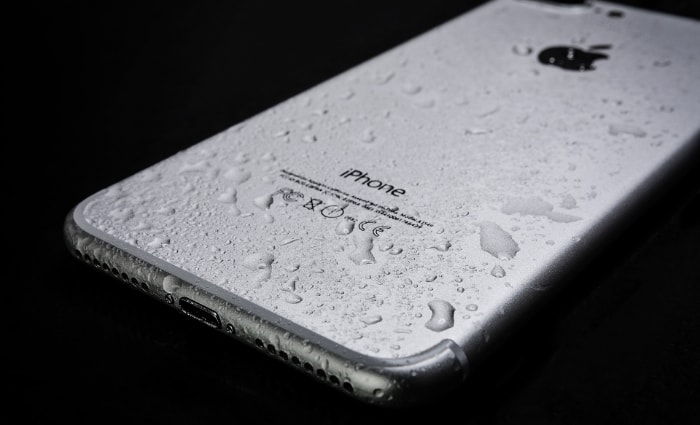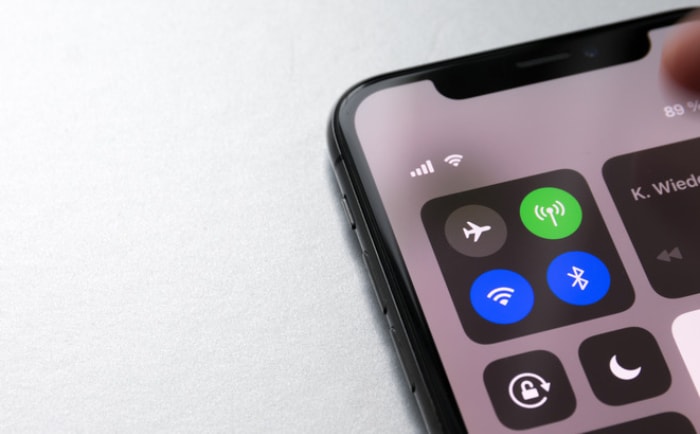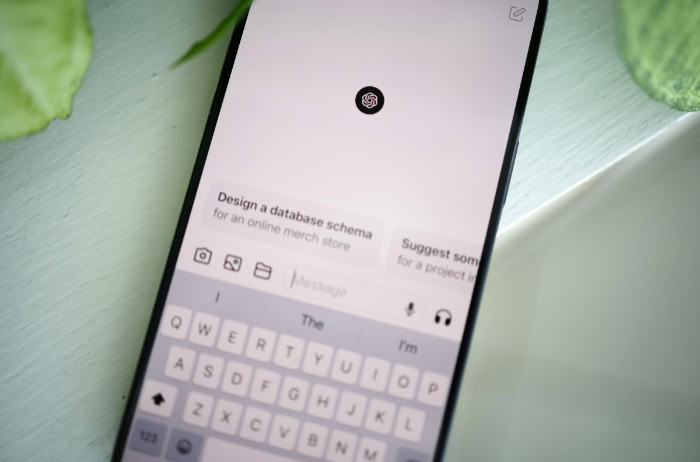Phone Won’t Charge After Dropping in Water: Solutions

That heart-stopping moment when your phone meets water is often followed by a new wave of panic when it refuses to charge. Your first instinct might be to immediately plug it in, but that impulse could cause permanent damage.
Modern smartphones are designed to protect themselves from short circuits and corrosion by disabling the charging port when moisture is detected. This protective measure, while frustrating, is your phone's first line of defense.
Immediate Safety Actions
Your immediate response after a phone gets wet can make the difference between a minor inconvenience and a costly repair. Acting quickly and correctly is the best way to prevent electricity and water from creating a short circuit, which can cause irreversible damage to the internal components of your device.
Power Down and Unplug
The first and most critical action is to completely power off your phone. Do not just put it to sleep; hold the power button and follow the prompts to shut it down entirely.
If it was plugged in when the water exposure occurred, safely unplug the charger from the wall outlet before disconnecting the cable from the phone. Remove any connected accessories, such as headphones or dongles.
Finally, take off the case, as it can trap moisture against the device and slow the drying process.
Set Up an Initial Drying Station
With the device powered off, orient it so the charging port faces downward. Gently tap the top of the phone against the palm of your hand to help dislodge any water trapped inside the port.
After you have done this a few times, place the phone on a dry, flat surface in an area with good airflow, like a countertop or a table. A steady, gentle breeze from a fan can also help accelerate evaporation, but do not point it directly into the port.
Avoid Common Drying Mistakes
Many well-intentioned drying methods can often do more harm than good. Never use an external heat source, such as a hairdryer, radiator, or oven, to dry your phone.
High heat can damage the battery, melt internal adhesives, and harm the display. Likewise, do not use compressed air to blow out the port, as this can force water deeper into the device.
You should also resist the urge to insert any foreign objects like cotton swabs, paper towels, or toothpicks into the port to absorb moisture or remove debris. These can easily damage the delicate charging pins or leave behind lint.
It is also wise to avoid the popular myth of putting the phone in a bag of uncooked rice; rice dust and small grains can get into the port and cause more problems.
Understanding Moisture Alerts

Seeing a moisture alert on your screen can be alarming, but it is actually a positive sign that your phone's protective systems are working correctly. Manufacturers include these features to prevent permanent electrical damage when liquid is present in the charging port.
The alert temporarily disables charging functions until the device determines it is safe to resume.
Why Charging Is Disabled
Modern smartphones are equipped with tiny sensors inside the charging port. When these sensors detect the presence of moisture, they automatically cut power to the port to prevent a short circuit.
An electrical current passing through water can rapidly corrode the metal pins inside the port and potentially damage the phone’s main logic board. By disabling the charging capability, the phone protects itself from this immediate and often irreversible harm.
Common Alert Types and Their Behavior
The notification you receive can vary depending on your device's manufacturer and operating system. Some phones display an explicit “Liquid detected” message on the lock screen, while others show a small water-drop icon in the status bar or a “USB port disabled” notification.
It is common for these alerts to remain active for some time even after the port appears visually dry. The internal sensors are highly sensitive and will not clear the alert until all traces of moisture have completely evaporated, which can take several hours.
Safe Retrying and False Positives
Patience is essential before you attempt to charge your phone again. After performing the initial drying steps, you should wait at least one to two hours in a dry, ventilated area before reattempting.
A safe retry involves using a known-good cable and power adapter once you are confident the port is dry. Sometimes, these alerts can be triggered by false positives, such as high humidity from being in a steamy bathroom or a very damp climate.
If you suspect humidity is the cause, moving the phone to a cooler, drier environment will typically resolve the issue.
Drying and Safe Power Options
While your phone's charging port dries, there are safe methods to encourage evaporation and alternative ways to power your device if you need it urgently. The most important virtue during this stage is patience; rushing the process can lead to setbacks or permanent damage.
Effective Drying Methods
The most effective drying method is simply allowing time and airflow to do their work. Place your phone, port-side down, in a location with good air circulation for at least four to five hours.
For a significant water exposure, it may take up to 24 hours for the internal sensors to register as completely dry. Before you try plugging it in again, visually inspect the port with a flashlight to look for any remaining moisture or debris.
If it looks clear, you can attempt to connect a charger. If the moisture alert reappears, unplug the device immediately and allow it to dry for several more hours before trying again.
Interim Power Solutions
If your phone supports wireless charging and you need to power it on while the port is still disabled, it is a safe and effective option. Wireless charging uses magnetic induction and does not rely on the physical connection of the charging port, so it bypasses the moisture detection system entirely.
Before placing your phone on a wireless charger, make sure the back of the device is completely dry. This temporary solution allows you to back up important data or use your phone for essential tasks while giving the port the extended time it needs to dry out completely.
Checking Your Accessories
A wet phone port is often accompanied by a wet charging cable. The metal contacts on the end of the cable can also corrode or short out if used while damp.
Before you reconnect any accessories, carefully inspect your charging cable and power adapter. Ensure the USB connector on the cable is perfectly dry.
If you have any doubt, set the cable aside to air dry as well. Once you believe the phone's port is ready, it is a good practice to test it with a different cable and adapter that you know are dry and functional.
This helps you determine if a persistent charging issue is with the phone or a faulty accessory.
Post-Drying Troubleshooting

Even after you have allowed your phone to dry completely, charging problems may persist. A lingering software glitch, hidden debris, or minor corrosion can prevent the phone from charging normally.
Before assuming the worst, a methodical troubleshooting process can help you isolate the cause and potentially resolve the issue without needing a repair.
Perform Visual and Basic Checks
Start with a careful visual inspection of the charging port. Use a bright flashlight to look for any signs of remaining moisture, discoloration, or green or white residue that could indicate corrosion.
Check for physical debris, such as lint or dust, which can become compacted and trap moisture. If you see any lint, you can try to gently remove it with a non-conductive item like a plastic or wooden toothpick.
Be extremely careful not to scrape or apply pressure to the delicate metal charging pins inside the port. Never insert anything metal into the port.
Follow a Methodical Test Sequence
If the port is visually clean and dry, begin a sequence of tests to eliminate potential variables. First, try charging your phone with a different charging cable and power adapter that you know are working correctly.
A faulty cable is a common point of failure. If that does not work, plug the charger into a different wall outlet to rule out an issue with the power source.
As a final software step, perform a simple restart of your phone. A reboot can often clear temporary software bugs that may be preventing the moisture alert from disappearing.
Recognize When to Escalate
There are several signs that indicate the problem is likely beyond a simple fix. If the moisture alert persists more than 24 hours after the initial water exposure, or if the phone only charges intermittently, it suggests a hardware issue.
Other serious symptoms include the port or phone becoming unusually hot when plugged in, or a complete failure to charge with any cable. If you can power the device on using wireless charging, back up all of your important data immediately.
When these problems continue, it is time to consider seeking professional help from a certified repair technician who can safely diagnose and fix internal damage.
Prevention Practices
While accidents happen, adopting a few simple habits and being more aware of your surroundings can significantly reduce the risk of future water-related charging issues. Protecting your device from moisture is always easier than dealing with the aftermath of water damage.
Adopt Good After-Exposure Habits
Even after a minor splash or being caught in the rain, it is wise to adjust your charging routine. Delay plugging in a cable for at least a few hours to give any unseen moisture a chance to evaporate.
If your device supports it, favor wireless charging as your initial method for powering up after any potential water exposure. Giving your phone extra drying time is a simple, no-cost way to prevent the moisture alert from appearing in the first place.
Cultivate Environmental Awareness
The environment where you charge your phone matters. Avoid plugging it in in high-humidity locations, such as a steamy bathroom right after a shower, as the moisture in the air can sometimes be enough to trigger the internal sensors.
Periodically inspect your phone's charging port for lint, dust, and other debris that can accumulate over time. A clean and unobstructed port is less likely to trap moisture and cause charging problems.
Implement Protective Measures
For an added layer of defense, consider using a high-quality water-resistant case. While many modern phones are rated for water resistance, this rating can diminish over time as seals age and wear.
A good case can provide extra protection against splashes and accidental submersion. Above all, practice mindful handling of your device.
Keeping your phone away from the edge of sinks, pools, and beverage containers is the most effective preventive measure you can take.
Conclusion
When your phone stops charging after contact with water, your first moves are the most important. Prioritizing safety by immediately powering down the device prevents short circuits and gives you the best chance for a successful recovery.
The next step requires patience; allowing the phone to dry thoroughly in a ventilated area is non-negotiable. If problems continue after it is dry, a methodical approach to troubleshooting by testing accessories and checking for debris can often solve the issue.
However, you must recognize when to escalate the problem to a professional, especially if alerts persist or the device overheats. By integrating these recovery steps and adopting simple preventive habits, you can protect your phone from future water-related incidents and minimize disruption.


